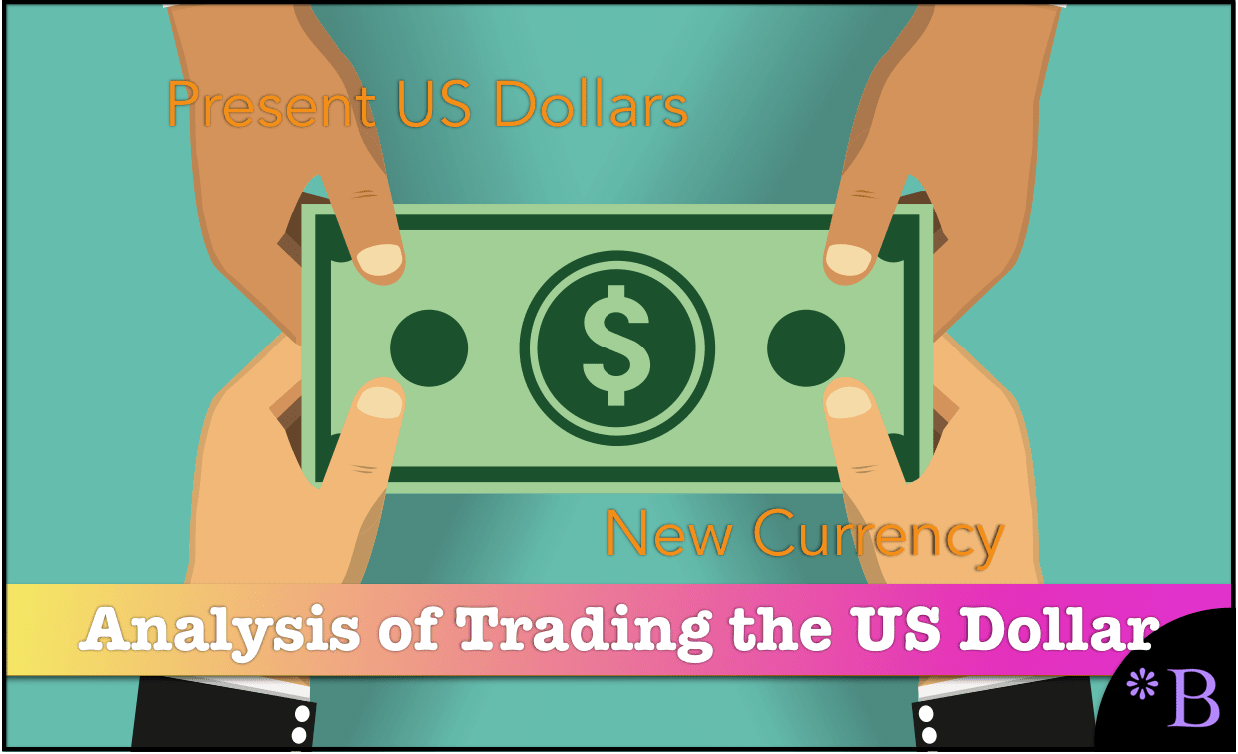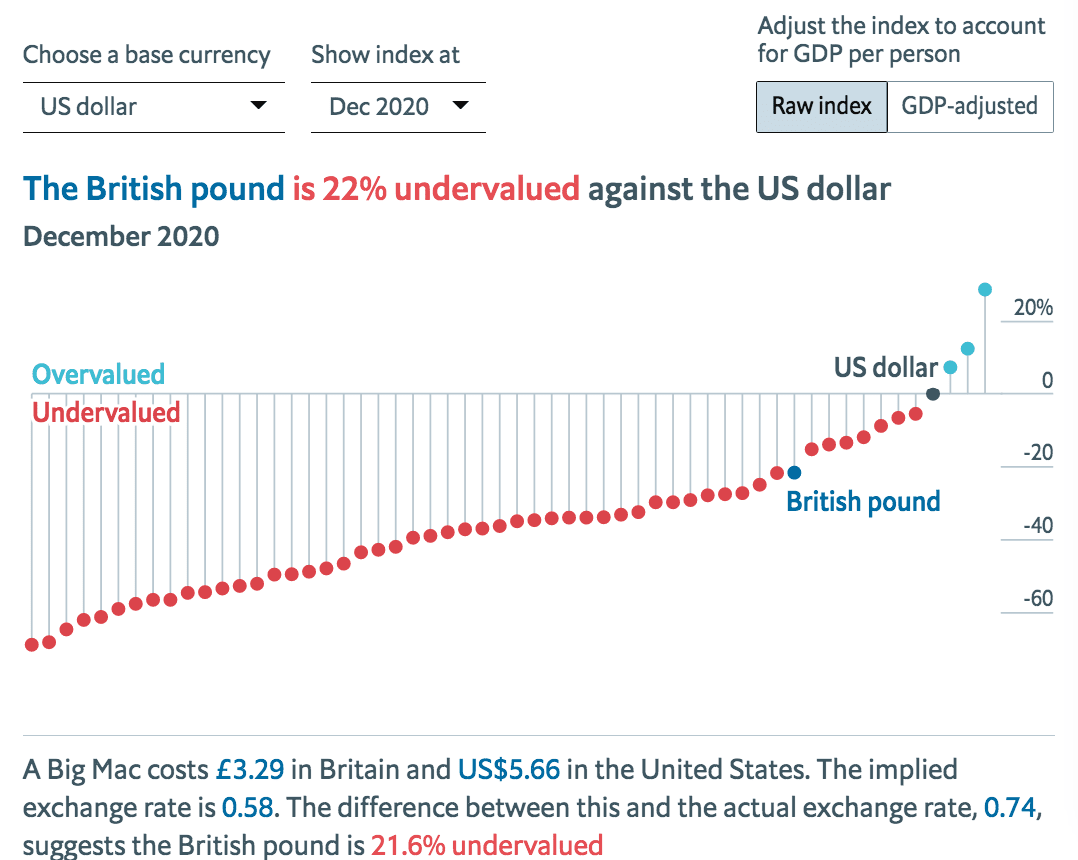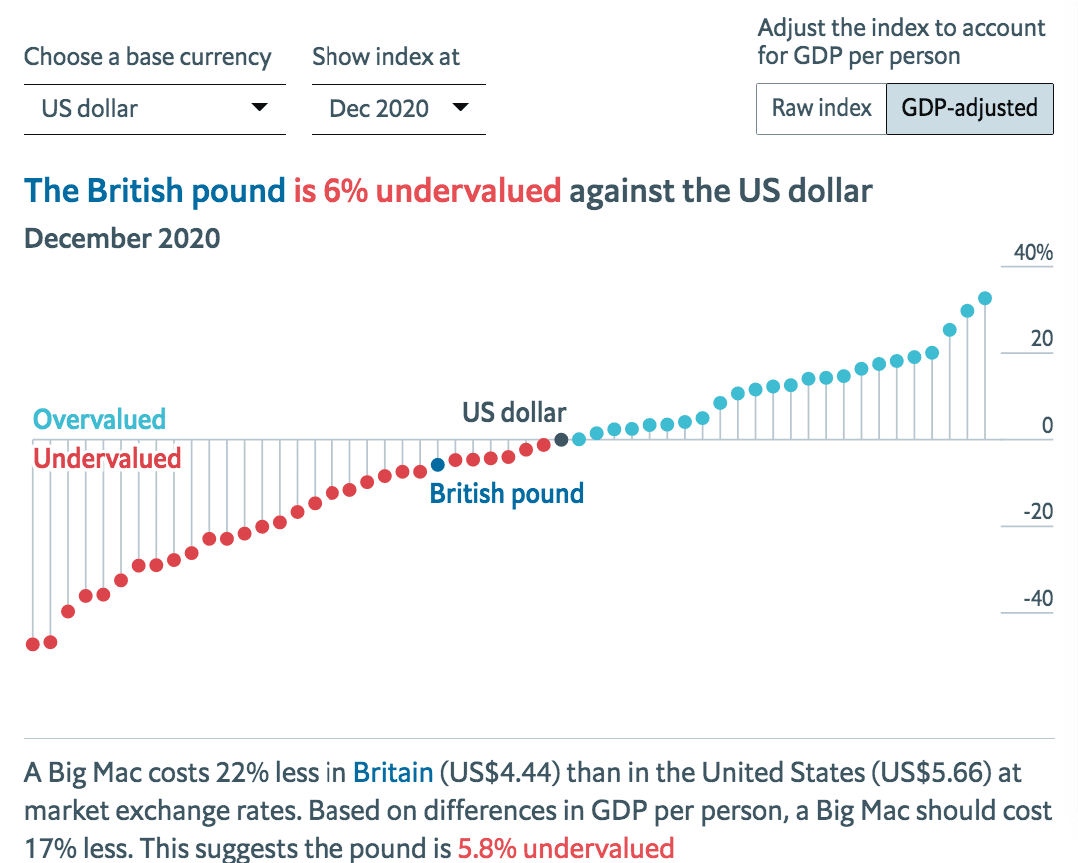The 2021 Analysis of Currencies Versus the US Dollar
Executive Summary
- In 2021, with the likelihood of inflation increasing, one question is whether foreign currencies offer a high probability of appreciation.
- This article will use the Big Mac Index to test this hypothesis.

Introduction
This article is designed to analyze how other currencies look like an investment for those already in US dollars. The background is that due to monetary policy, inflation is highly probable. Therefore, the question is, are there other currencies that offer both appreciation and a potential hedge against the likely inflation in the US dollar.
Our References for This Article
If you want to see our references for this article and other related Non Status Quo articles, see this link.
The Big Mac Index
The Big Mac Index is a way of comparing relative currency strength and is an attempt to identify investment opportunities. It is explained by Wikipedia as follows.
The Big Mac PPP exchange rate between two countries is obtained by dividing the price of a Big Mac in one country (in its currency) by the price of a Big Mac in another country (in its currency). This value is then compared with the actual exchange rate; if it is lower, then the first currency is under-valued (according to PPP theory) compared with the second, and conversely, if it is higher, then the first currency is over-valued.
The Big Mac Index is limited by geographical coverage, due to the presence of the McDonald’s franchise. For example, in Africa McDonald’s is only present in Morocco, Egypt and South Africa (there has been a similar index created solely for Africa called the “KFC Index”: as the name suggests, instead of using a Big Mac, this index uses KFC’s Original 15 pc. bucket to compile its data).
In addition, there is no theoretical reason why non-tradable goods and services such as property costs should be equal in different countries: this is the theoretical reason for PPPs being different from market exchange rates over time. The relative cost of high-margin products, such as essential pharmaceutical products, or cellular telephony might compare local capacity and willingness to pay, as much as relative currency values.
Nevertheless, McDonald’s is also using different commercial strategies which can result in huge differences for a product. Overall, the price of a Big Mac will be a reflection of its local production and delivery cost, the cost of advertising (considerable in some areas), and most importantly what the local market will bear – quite different from country to country, and not all a reflection of relative currency values.

The Big Idea
This idea is that you can identify undervalued currencies by looking at the lower end of the spectrum. To see how well this has a probability of working out, we went back to 2018 and hypothetically chose some of the lowest valued currencies — simulating what would have happened if we had followed this strategy in 2018.
This table shows that the undervalued currencies tended to stay undervalued. Two currencies did strengthen against the US dollar, but not very much. And this return has to be allocated across four years. In this case, the return was meager under this simulation.
What Happens When You Include Relative GDP Into the Big Mac Index?
Some of the quotes laid out the limitations of the Big Mac Index.
To account for this, The Economist developed an adjusted BMI. This accounts for the GDP of the country. Once this is done, the US currency goes from what looks very overvalued to about average value.

This explains why a person from the US can vacation in a country like the Philippines or Thailand at a low cost. However, that is only because they are bringing dollars earned/inherited/etc. from the US with the US cost standards. As soon as a person were to try to earn that same money in these countries (even if the work permit was taken out of the equation), They would be likely worse off than living and working in the US.
The Best Way to Leverage Weak Currencies
Moving to a low-cost country with a weak currency is an excellent value, but only because the US dollar has a high probability of staying high against a weak currency like the Thai Bhat or the Philippine Peso. This is because there is no expectation, or even desire, to see a weak currency appreciate against the US dollar.
This strategy relies upon the ability to either move to a country, (or instead spend time in multiple countries with weak currencies as tourist visas eventually run out) and to bring one’s own retirement fund — or to keep working through the Internet — and therefore earning income at a first-world level of pay while living in a low-cost country.
The Appeal of Converting the US Dollar to Other Currencies
The idea of using a purchasing power parity measurement like the BMI is appealing to try to find undervalued currencies. However, the upside is not very appealing when compared to alternative options.
One issue that complicates this analysis is that the US currency, due to inflation, is likely to depreciate more in the next four years than it did in the past four years. However, how much? Based on GDP, the US is already a mid-pack currency. And very few of the currencies currently rated below the US now in strength are major currencies. The ones currently below the US that can be considered major currencies are the following:
- Australian Dollar: 4% Below
- UK Pound: 6% Below
- Danish Krone: 10% Below
- Japanese Yen: 19% Below
Is the US dollar likely to drop below all of these currencies four years from now? The probability that it does would appear to be low. And if it did, the likelihood is that the drop would not provide a very good return.
Conclusion
One can hedge against inflation if one moves out of the currency (the US dollar in this case) in question. However, to place this activity high on the list as an investment option, the return has to be appealing. This analysis indicates that given the present circumstances, the potential return is low. That is a hedge against inflation is only one of the criteria. One might make the argument that one could not only switch currencies but also invest in something in that other country. That is true but is beyond the scope of this analysis.